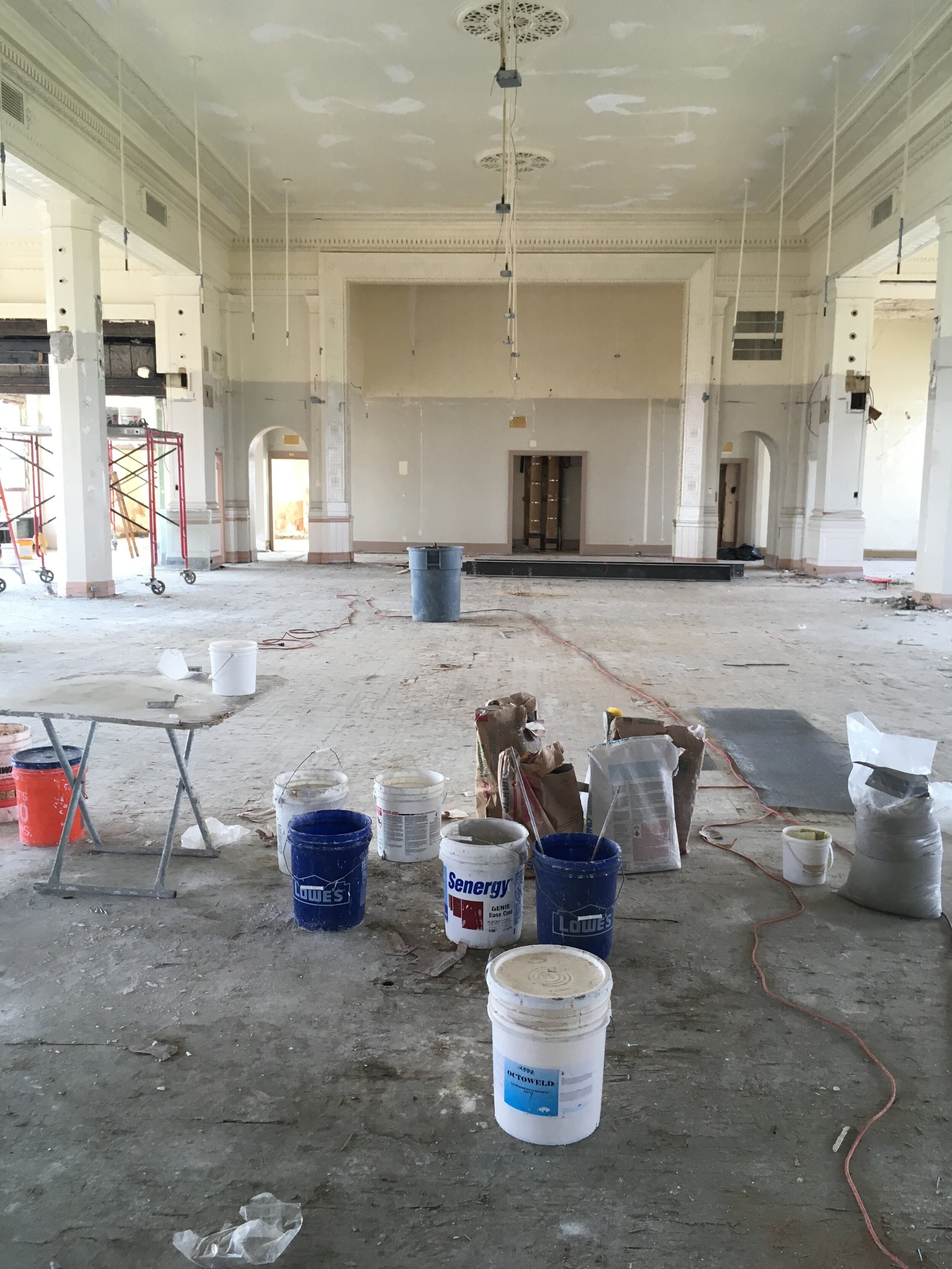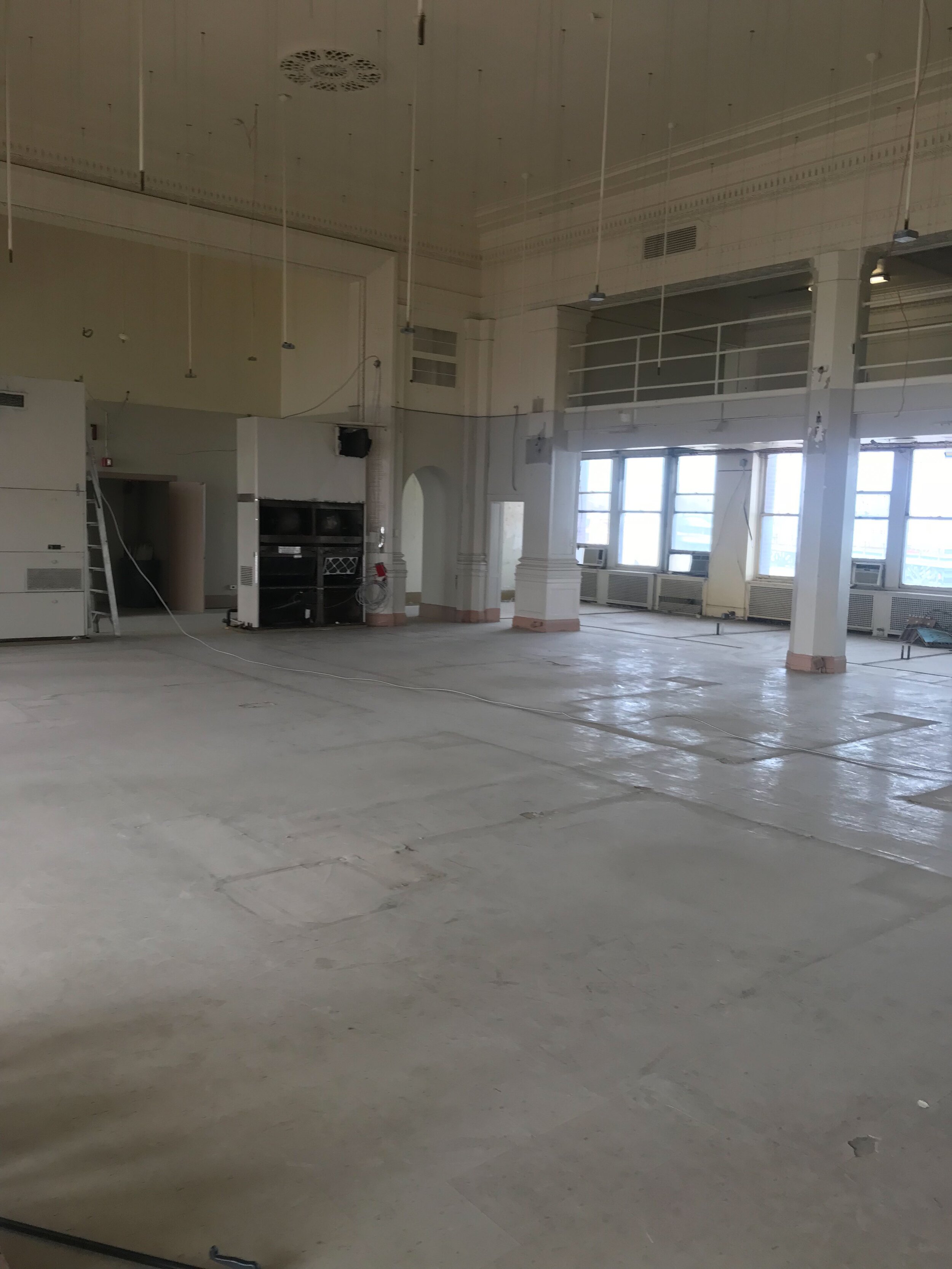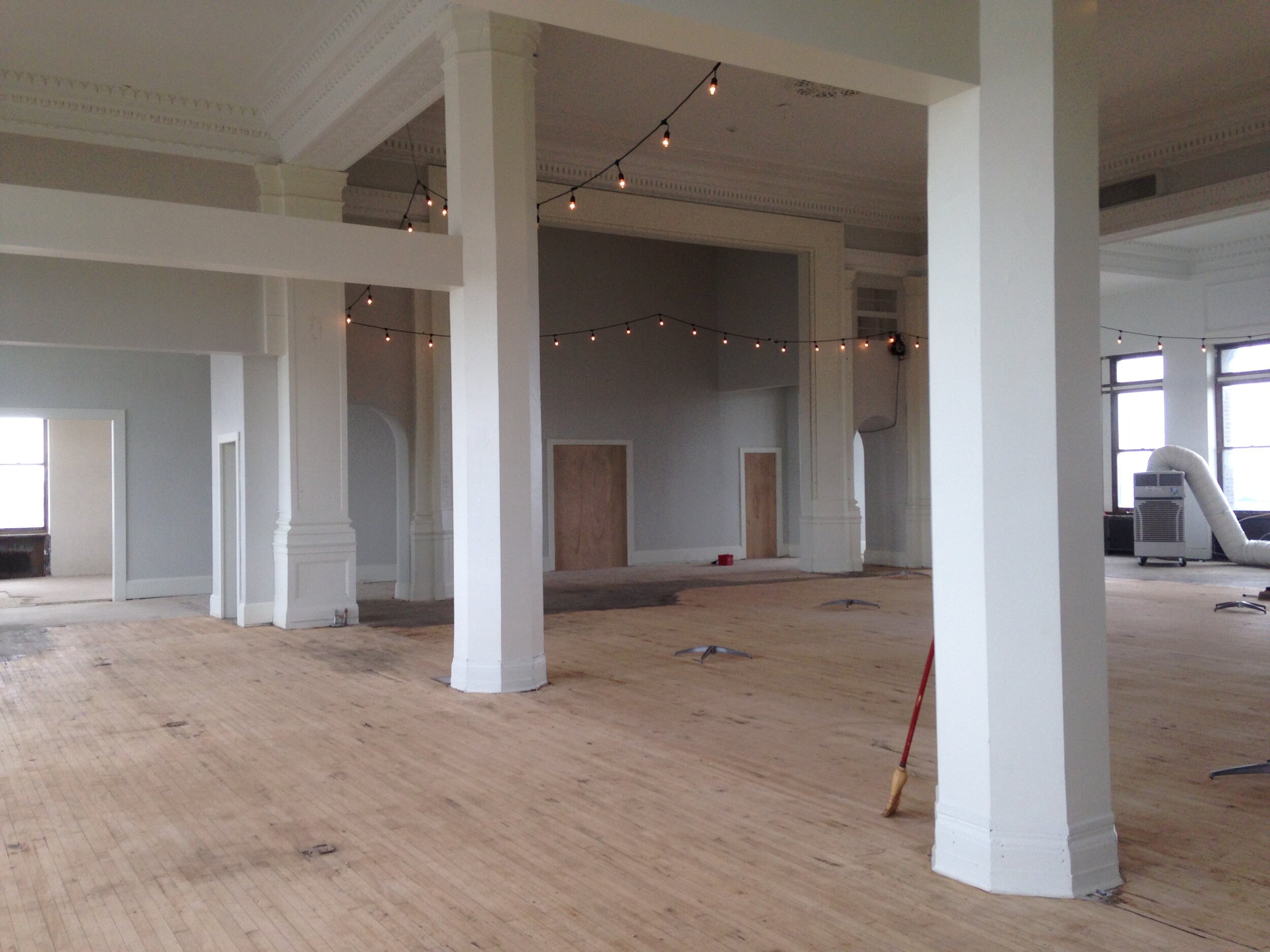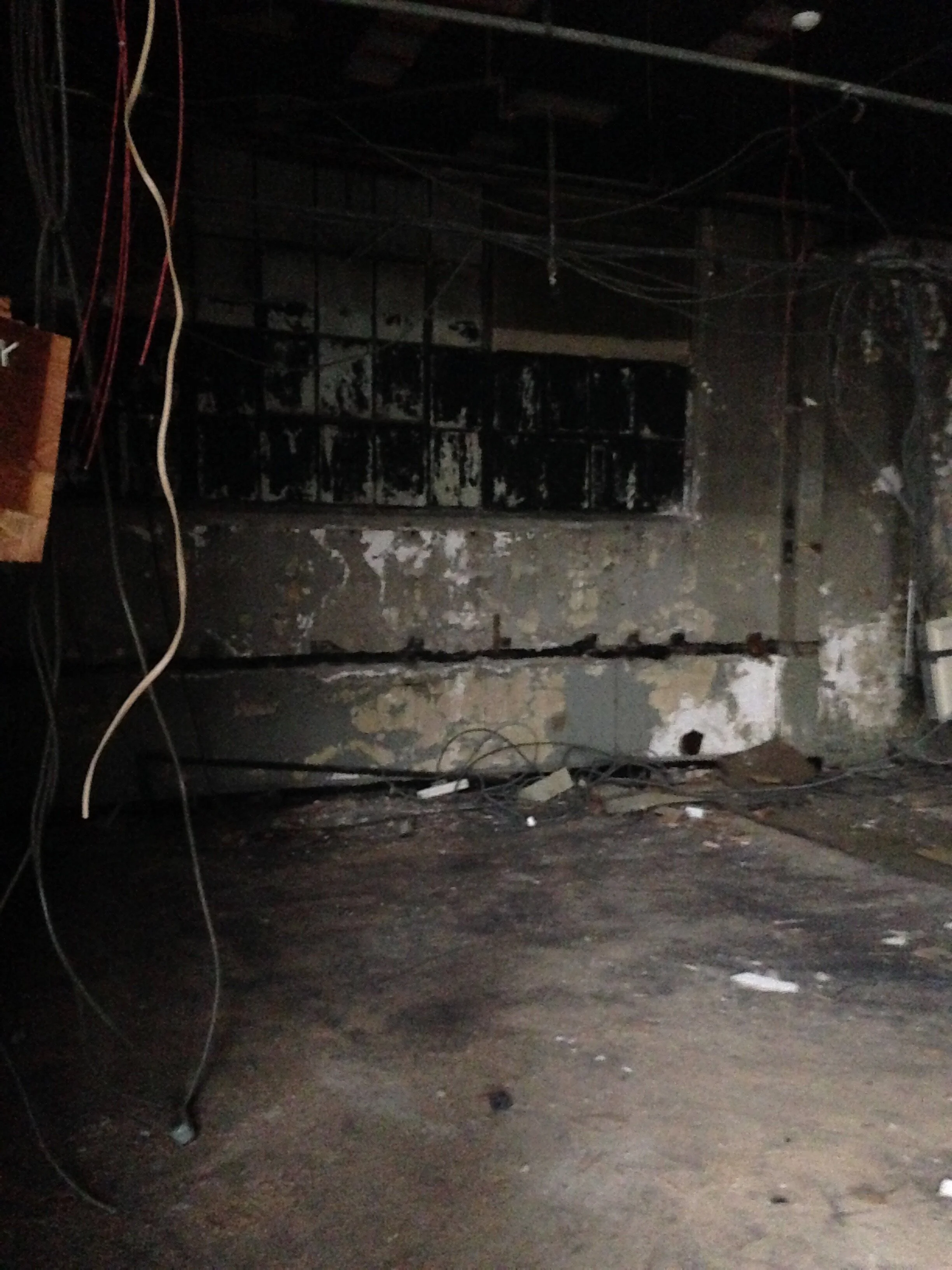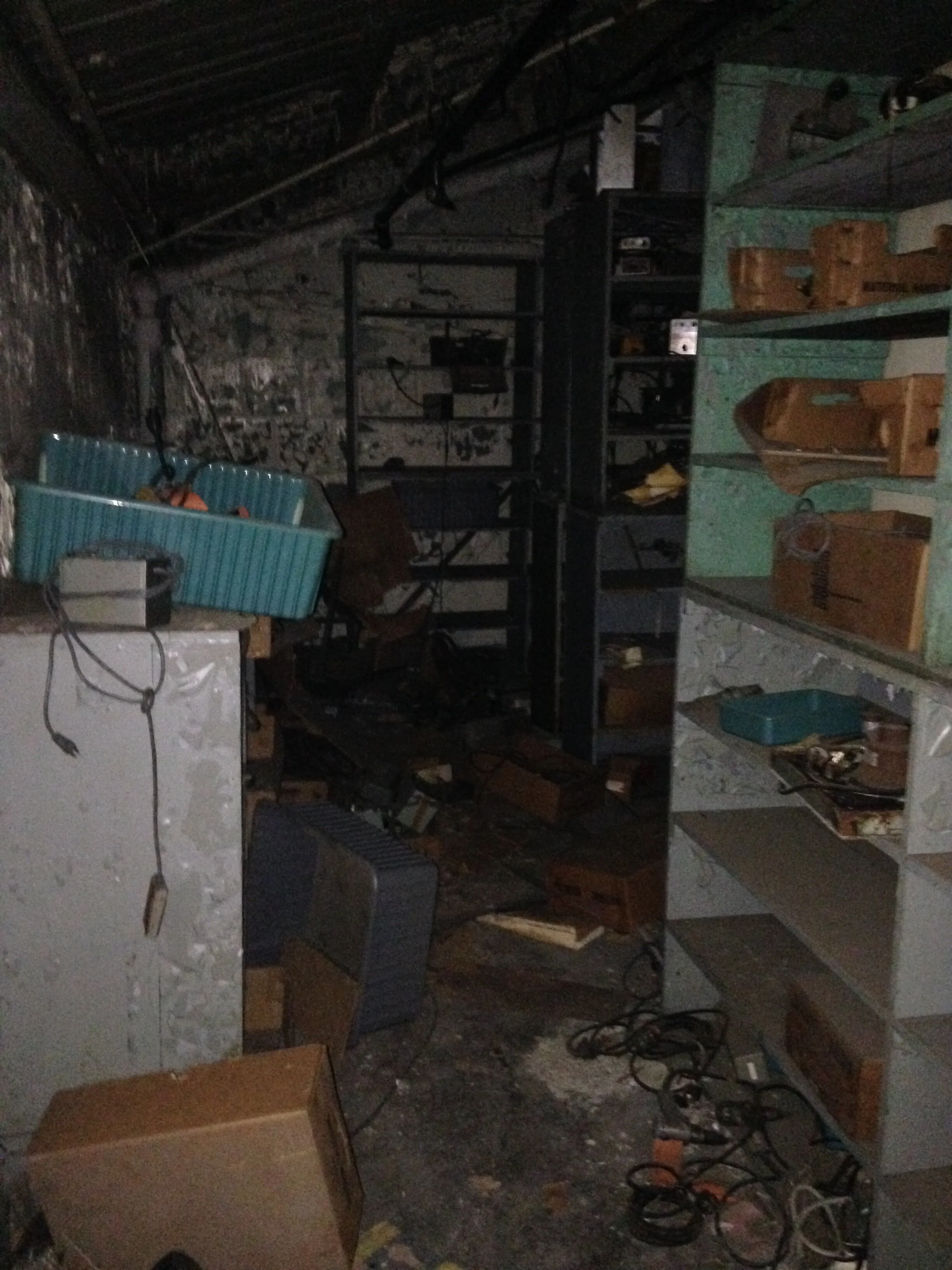Raiders Of The Lost Music Industry in Camden, New Jersey
By: Graham Alexander
‘The Victor Records Building’ (Victor Talking Machine Co. Bldg #2 in 1917) - One of the major world birthplaces of the music industry.
The original title of this article was 'RAIDERS OF THE LOST BARK' - do you get it? because of the Victor Talking Machine Co. mascot 'Little Nipper'? (His Master's Voice®)? None the less, all of us at Victor's offices agreed that this might leave readers with absolutely no idea what we were talking about!
So let me take you on a really interesting tale...or should I say TAIL?? (did you get what I did there?? wow, this company is just ripe with dog puns)...
BACK TO THE POINT....in 2016, The Victor Talking Machine Co. was fairly early in its rejuvenation. We had opened the Victor Vault in Berlin, NJ (Camden County) - and we had offices/recording studio/and assembly of Victor Home Audio out of a small commercial space in Haddonfield, NJ (Camden County). We had long sought to expand our capabilities of manufacturing in both Victor Home Audio Manufacturing and Victor Record Pressing - and likewise, we wanted to claim company heritage in Camden City; we had originally intended on settling into a defunct bank building opposite Victor Building #17 in Camden City (The Victor Lofts/Commercial spaces) to be the 'Victor Vault' (the archives of The Victor Talking Machine Co., performance space, radio station, and something of a visitors center/micro museum for visitors to the venue) The establishment of Camden City was none too interested in us as we walked through their doors with the concept of a venue - I suppose I don't blame them; the idea was entirely untested. None of us could have possibly have dreamed that The Victor Vault would now be in its 5th season - and growing all the time...so there was really no thought by the 'powers that be' that some relative 'kids' would come in and open an entertainment/archive (itself an untested concept) in what was well known as a troubled city.
The Victor Records Building (Victor Talking Machine Co. Bldg. 2) Camden NJ as we first started to utilize office/boardroom space on the 7th floor in 2017. NOTE: the lack of ‘VICTOR TALKING MACHINE CO’ - it was covered by GE in the 1980s.
In 2017, the Camden City School Board announced its intentions to sell the 8 story - 90,000 sq ft Victor Building #2 (the original executive building - now known as The Victor Records Building). The Victor Co. went right to work on a proposal that wasn't unheard of to long time city gatekeepers; a museum of recorded sound. However, we had a very different angle; our concept included the caveat that this facility would be not only interactive - but authentic in that it was operated by The Victor Talking Machine Co. - across floors 7 and 8 of The Victor Records Building. We prepared a proposal and a full booklet describing the importance of the structure and our experience in entertainment, development of entertainment properties, etc - and submitted it to an open state of NJ overview of 'bids' for the building.
We were fairly certain they were looking to sell the building outright, but we thought 'this couldn't hurt’ in the event they are looking to simply minimize their own footprint and keep several floors. Months went by, and we continued, as usual, making music at Victor, designing and building products for the catalog, digitizing archives, operating The Victor Vault; but we set aside special time for a covert campaign around the politicos of Philadelphia/Camden County to push the building project into overdrive; if we weren't going to take over the building or move offices there - we weren't going to let it hit the wrecking ball.
The Victor Talking Machine Co’s original proposal was known as ‘The Birth Of Music Museum” - it was this booklet that would raise the interest to save the building.
In the spring of 2017, after hearing that the Camden, NJ government was willing to take a wrecking ball to Victor Building 2...we made some calls and had some friends pull some strings and SUDDENLY; members of The Victor Co. were sitting in a brand new top floor all glass modern office building in a 'beautiful' (I'd call it American Psycho-esque) Marlton, NJ Office Park - meeting with a large political-financial 'power broker'; 'The Don' (some might say, of the political sphere of New Jersey/Philadelphia). Our request was simple; if we can't be apart of a project - make it well known that THIS building, The Victor Records Building at 201 North Front St. in Camden, NJ was one of the most important buildings in Camden - if not THE most important; and one of the most significant structures in the entire music industry.
They didn't know what we knew; when GE had purchased RCA/Victor in 1986 - it was their prerogative to do what companies DO; make choices that save money....If that meant destroying - or hiding - evidence of anything that would permanently link a brand or company to ONE location...especially CAMDEN, NJ; they were going to make sure they hid or destroyed it. This, actually, was part of Jack Welch's (GE CEO at that time) battle plans for any company takeover. Having studied ancient English takeovers of Wales and Scotland in the 1000s (AD) - he understood that to destroy uprisings; you first destroy the history of independence soon after a takeover. He applied this to Camden, NJ - systematically minimizing The Victor Camden plant's contributions - lest it cause an uproar among pink-slipped personnel.
Pretty much how it went…
With access and knowledge of how important The Victor legacy was to the modern music industry (and several media industries) - and with our brands - we had an opportunity to do something that was destroyed in the 1990s; we were resurrecting a ghost.
The meeting started off...rough...almost immediately we were told 'that building is coming down'. We had feared this...so we went into our presentation that would prove fateful to saving the building.
Utilizing material from our archives at The Victor Vault, we detailed the intimate boardroom documentation - bringing along a presentation of historic documents from our company archives; an early Frank Sinatra contract and photo set, documentation of Elvis touring the building shortly after meeting with executives and shaking hands with employees in a Camden plant tour, Woody Guthrie's recording notes to his producer (who maintained his office on the 8th floor), the order that created the first record manufactured in VINYL material from the 7th-floor boardroom, Einstein's notes the heads of microphone manufacturing on floor 6, an account of the formation and operations of the famous Abbey Road Studios (the purchase and construction of which was approved on floor 7) - the formation of the JVC (Japanese Victor Company) brand on the same floor. We even included a note from our Japanese friends; executives at JVC in the modern age detailing the importance of the structure from thousands of miles away.
And...it worked.
Phew!
We shook hands - finally; we were able to push through to someone that could influence in someway; the final fate of this very important structure to music industry history. We received a phone call approving our use of Eldridge Johnson's office (co-founder and first president of The Victor Talking Machine Co.) and the famous Victor boardroom in the following weeks. We utilized the space as a means of assisting potential investors - and by September of that year; we removed the front signage from the building for the first time in nearly 30 years; finally revealing the VICTOR TALKING MACHINE CO. name etched into the stone facing. We conducted interviews (with Oliver Berliner - Grandson of Victor co-founder/inventor of the microphone/record/record player) - and some television promotional footage in drumming up excitement for the building.
First order of business was to reveal the long covered signage ‘VICTOR TALKING MACHINE CO’ (it was just revealed for the first time in decade in this photo…hence the dirt)
By November of 2017, The Victor Talking Machine Co. joined the team that would assist in developing the property for its best use. In 2018, negotiations and in-fighting stalled progress on the plans for Victor's permanent and expanded presence in the building. Day after day after day I intended meetings that seemed to be entirely oblivious to the realities of the music industry - these were meetings hell-bent on pushing the taxpayer into the burden of restoring this building fully.
Hey, thats me! at The Victor Board Room/The Victor Records Bldg. (Victor Talking Machine Co. Bldg.2)
I'm a 'get out the paint' person - we had helped restore the building we are currently in; installing windows, pointing bricks, HVAC, flooring, ceilings - you name it; The Victor Co. had some experience in it. We knew what it would take to create an experience that would be something the public would embrace enthusiastically - The Victor Vault was a stunning success. It managed to bring an entertainment/archival facility to what was a very very very desolate area, and the community embraced it from the whole region. We felt, largely, an expanded version of this concept was in order - one that also expanded our manufacturing capabilities - and of course; took over the original Victor Studio A; which still sits at the top floor of Victor Building 2.
But like many plans, the political leaning folks - the underwriters - the insurance humans - lawyers - developers....made what should have been a very simple concept ...a very complex one. One that was unreasonable to ask of the Victor Co.'s team - and by Spring of 2018; our attachment to the process of restoring the building was largely focused on saving the structure, and removing the last of any archives or artifacts that remained in it - while promoting the buildings’ importance in music history - no matter if we were going to remain in the building - or not.
I'll admit, it was a difficult choice to make - no one was more disappointed than myself, but we had a choice...risk losing the Victor Company based on the circumstances that surrounded the possible failure of such a bloated, questionably legal concept involving an advanced use of public funding OR be happy with The Victor Co's work in saving the building from the wrecking ball; and make a better choice for the future of the company by choosing another manufacturing facility, recording studio, and offices elsewhere more welcoming in Camden County.
Victor Bldg. 1; our sprawling new factory opened in 2019 replacing the Haddonfield assembly facility (and Victor Studio).
We chose the latter - and haven't regretted it since.
Here is where the story becomes *fun*; the gutting of the building was a swift concept - hundreds of workers bombarded Victor Building 2 (and Victor Building 3...which they didn't even realize was attached to the building - they referred continuously to this large amount of space as 'The Annex' (my assumption was that this came from the school board/state of New Jersey walkabouts) - during insurance meetings; we made note that this was in fact...the remaining structure of RCA-Victor Building #3. I don't think they ever cared one bit about the history of the building - but several firms were subcontracted out to gut the building - and The Victor Co. itself was left to its own devices. As 1960s RCA-Victor ceilings were removed and revealed beautiful hidden architecture - the upstairs recording studio was revealed; The Victor 'Auditorium' Studio was one of the first LARGE spaces specifically built for recording; the first large format recording studio. Finished in 1918 - the 'Auditorium Studio' had The Great Enrico Caruso grace its halls - along with The Boston and Philadelphia Orchestras in what became the very first recordings of full orchestras. Early Jazz and guitar recordings, bluegrass, film work, and production work itself was conducted on the 8th floor - The Victor Studio A floor at Victor Building 2. It was a rewarding moment to see our efforts actually preserve this building - but that recording studio was a primary goal. Floors 7 and 8 were very much intact - floors 1 through 6 were largely gutted because they had been modernized heavily over the years. Some floors were shuttered entirely because they were found to be environmentally unsound (a problem that many felt made the entire building a candidate for the wrecking ball.)
Gutted! These are how all the lower floors were gutted. This photo isn’t as sad as it looks; over the years there were so many fake walls and drop ceilings that the space looked nothing like the beautiful open air offices of The Victor Company when the building originally opened….this was right after fake walls and ceilings had been pulled down.
Within a month and through the summer of 2018 - the building was painstakingly gutted and restored to many original standards (and some added modern safety standards). The Victor Talking Machine Co. entered 1000s of items from buildings 2 and 3 to The Victor Vault (Building #19)- (and also the Victor Corporate Archive at Building #1). Almost anything you can think of was removed from that building - just occasionally; it was a tragedy. But the alternative was a complete collapse of the structure itself - so you have to take what you can get, really. Floors 7 (The Boardroom, Record label office) and 8 (The recording studio and producers floor) were left largely intact.
The beauty of the primary building (The Victor Records Building/Bldg #2) gave way to a serious exploration of Bldg #3 that resulted in what 'American Pickers' might make a whole 3-hour episode on. The Victor Company's associates are, at our heart, musicians - we don't take well to advice that tells us NOT to do something. Now, It is well known that parts of the entire Building 2 & 3 complex had all sorts of environmental problems - serious environmental problems that I would NOT recommend anyone else heading into with such reckless abandon. Now that I've given you all that warning; my friend Zach Harski and I headed into the 'dark areas' of Building 3 - far before any thorough gutting had occurred. As music history enthusiasts, Camden natives, AND executives of The Victor Co. - we felt it was sort of a duty to do some raiders of the lost ark type stuff - while we still had the chance. Sadly, I'll say; we were not successful in saving Victor Bldg. 3; this was earmarked for parking by investors and developing partners - and we were outvoted in the grouping. There was some talk of opening the building up for mixed retail use - but all of that came of nothing.
Building 3 - completed in 1930; partially demolished in the 1990s. What was left was an attached sliver that The Camden School District began to call ‘The Annex’ - in reality; this 80,000 Sq. Ft building attached to Building 2 was about the same square footage; but far more industrial in nature - this was Victor Building 3.
We were aware that, Bldg. 3 (originally a large scale manufacturing plant for Radios, drop 45 Victrola record players, TVs, Phonograph/TV combinations, and then pro video and pro audio equipment before it) was fully shuttered in the 1990s and largely closed off to daily workers by the early 2000s by rule of an EPA inspection that failed in 2001 - and we were MORE aware that the dead space was not going to be appealing enough for investors to pass up a 'big beautiful parking lot' (this was an actual quote in a project development meeting that I heard when an investor was asked about the fate of this particular structure by insurance agents doing an overview of the property....) All of this meant that the 80,000 sq. ft. Victor Bldg 3 looked like a ghost town; full desks with 1990s and early 2000s paperwork on it - falling ceilings - mice - flickering tube lighting - mold - family photos left on desks as if everyone just...disappeared one day. It was pretty great - or pretty freaky - or maybe both.
Building #3 ‘The Annex’ looked very much like a shipwreck in places - but more dangerous.
We traveled to the powerless (no electricity) back of the building on the second floor and found a dusty padlocked door. Ignoring the warnings NOT to enter; of COURSE ...we used a hammer and screwdriver we had nearby to break open the decaying lock. If I had to guess, I'd say this lock was from sometime in the late 80s or early 90s. As we broke into this 30+ year time capsule we ran into a large wheeled rotating file cart; it too was locked - but it had a tag on it which read "MOVE FROM BUILDING 15 TO 3". Building 15 is the legendary Victor Building that predated Building #2 - Building #15 was actually built in 1906 or so; as Victor Talking Machine Co.'s records took off in massive numbers alongside the brand new 'Victrola' brand record players -the first without an external horn. Building #15 has become a mythical building in Music industry lore; it was the site of 2 of Victor's primary recording studios; The Carter Family, Louis Armstrong, Woody Guthrie, and countless others recorded in this building just across the street from Building #2 in the Victor Camden Plant. Could this rotating rolling file locker REALLY be from Building #15? (which was knocked down in 1973??????)
Inside the sealed off corridors revealed rooms and rooms untouched for at least 30 years - if not more in some cases. All audio and video equipment patents, manufacturing standards, microphone parts list, recording studio tests, etc etc etc. You name it.
We broke it open - and revealed hundreds of thousands of documents; full folios of intimate engineering and manufacturing details on some of the music industries most important iconic recording equipment; the first ribbon microphones (invented in Camden, NJ in 1932 at The Victor Laboratories), the first electromagnetic speakers, recipes for wax recording blanks (Wax blank disk manufacturing was - for many years the standard in recording studios around the world - a process invented by The Victor Co. - Victor performed this task in Building #15 for its recording studios), pre-amplifiers (did you know the modern pre-amp for all microphones and line-level instruments (guitars, keyboards etc) were invented at the Victor Electro-Acoustic Laboratories? - we did, but up until this point....it was very difficult to find any extensive archival material relating to the invention and/or development of such things. The list went on, and on, and on, and on and on. Never-ending. Truly. We were shocked. How was it...that in 30 years+....no one had cared to question the existence of this? And honestly...I think the answer is probably more complex than I'd like to say but in SHORT; its a matter of GE buying RCA/Victor in 1986 - immediately moving in the next several years to gut and sell off most of the company - and not really caring about absolutely anything relating to the music industry/recorded sound industry....time goes on....and GE deeds off the building to NJ - a different kind of bureaucracy that REALLY doesn't care about it...and so on...and so on...and so on.
Victor Bldg. #19 ‘The Victor Vault’ was tasked with the archives - they remain there today; our engineering staff utilized documentation to better modern manufacturing of Victor Home Audio/Victrolas - Headphones - Victor Records - Victor Tubes - Amplifiers; and to better Victor’s recording studio practices and design.
Having taken over the 'legal' duties of the long gutted Victor/Radio Corporation of America corporate entity (which GE had long-held while selling off the brands/divisions from 1986-2008) in the early 2010s, we knew we wouldn't have any problem reclaiming the abandoned documents - and we felt we had a duty to not only the music industry (and recording industry) - but to The Victor Co. and Camden, NJ itself.
But that’s not all!
Seen here: hand written schematics for Victor Division/Victor Talking Machine product engineering, RCA-Victor microphones, speakers, connectors, cables, meters, tape machines -and much much much more. All recall the glory days of American musical and electronics innovations - and many of which are the basis of all modern music playback and recording devices (and many electronics industries)
There was a MAZE of boarded-up rooms; many of these rooms sealed since the 70s, 60s, 50s....maybe even earlier. many of these rooms contained more documentation which we managed to bring into our service vans and back to the Victor Vault. You could see 1930s work-desks - mummified/skeleton birds that had made nests in the long-sealed tombs of Victor Bldg 3. - thousands of transistors, tubes, wiring, schematics, handwritten engineering notes - packets of late 1970s chip-sets - new old stock Victor Victrola phonograph needles - record label blanks - and some empty shelving as well.
There were more than a few 'boring' items - none the less; there were hundreds of thousands of historically significant music industry artifacts. One of the boarded-up rooms intrigued us; was bashed through a wall boarded up region in the building…a shelf was in front of it; but I knew the structure was missing 20 or so feet of space behind it with no way of accessing it - we bashed through the wall….PING we heard - as we broke through the wall….I hit it again…..PING……”what was that???” we wondered…..PING….PING….PING…..we used flashlights to look through the hole….a shiny disk caught my eye laying on the floor of a very orange room - the pings as it turned out…..were TILES falling off of what was an abandoned company bathroom. Lord knows what has to happen to a company bathroom for a company to entirely abandon it by sealing up ALL EVIDENCE OF AN ENTRYWAY for 40 years.
So it wasn’t all glamorous raiding.
Soon, we crossed over a long-dead ...im going to assume it was a boiler...but it looked like it had been out of service for many many years (50? or more?); till we found another 'do not enter' door. Breaking in; we could see through some of the floorboards down to a VERY steep drop to a VERY cement floor. It was clear that this structure - which was hanging above the former manufacturing space of Victor Bldg. 3 was - probably not suitable for many people to be in at once. None the less; logic never stopped us from making a great mistake!
We continued forward; I remember seeing a Pepsi sitting atop a 1974 newspaper - Philadelphia Inquirer. As if someone had been drinking it just moments ago...set it down....and almost 50 years later hadn't come back.
It’s in this room where we found - not only important artifacts - but seriously eligible manufacturing equipment from the 1920s to the 1940s. Metal tag stampers from the 1920s (for Victor Victrolas), record trimmer tooling, soldering tools, record punches, record press lubrication machinery, riveters, custom wrenches, tooling for various musical manufacturing, tube washing devices - basically; a lot....and not just 1 of something; 5, 10, 20, 40 of some things.
Machine tag machines pulled from Victor Bldg. 3 matched the date, year, and font of Victor Victrola record player tags - we utilize several of these now at Victor Bldg. 1 on modern tags. It would seem this room where older factory tooling went to be repaired.
We couldn't get it all in one day - in fact; 3 or 4 days of loading alone is what it took to remove Victor Building #3s lost Victor Talking Machine Co. - Victor Division archives. We later transferred a fair amount of tooling duplicates to use in manufacturing of Victor Home Audio Products at our factory that opened in 2019 (the new Victor Building #1).
At this point, I believe it was the spring of 2018 - we were well aware that Victor Bldg. 2 was not going to be where we opened our new manufacturing plant, recording studio, and offices - the heavily political air around the project left a poor taste in my mouth; and the company was heavily fatigued by the public/private partnerships utilized to acquire the building, restore it, and find a tenant. Lots of governmental based RED TAPE. We declined to be a tenant based on the absolute requirement that it utilize taxpayer money to do so - another (much larger) company (EMR) utilized the taxpayer dollars - agreeing to inhabit the building for a period of 10 years.
A rendering of Victor Building #2 aka ‘The Victor Records Building’ - a name we colloquially gave to the project.
The Victor Talking Machine Co. and its associates - important historic players like Oliver Berliner, The Johnson Family, Fred Barnum - did much to save The Victor Records Building (Victor Building #2), and excavate it of its remnants of music industry history for permanent display and archive at The Victor Vault nearby. Special thanks to Zach Harski, Stefan Orn Arnarson, Christina Sees and many more who helped in this monumental task. A true ‘Luke, Chewy, R2, C3PO, Leia, and Han vs. The Empire’ story.
NOTE: If you like content like this - and would like to see more; consider supporting The Victor Talking Machine Co. by buying your music supplies at VictorRecords.com - every dollar spent helps The Victor Co. in preserving history…and building for the future of the music industry in America.









